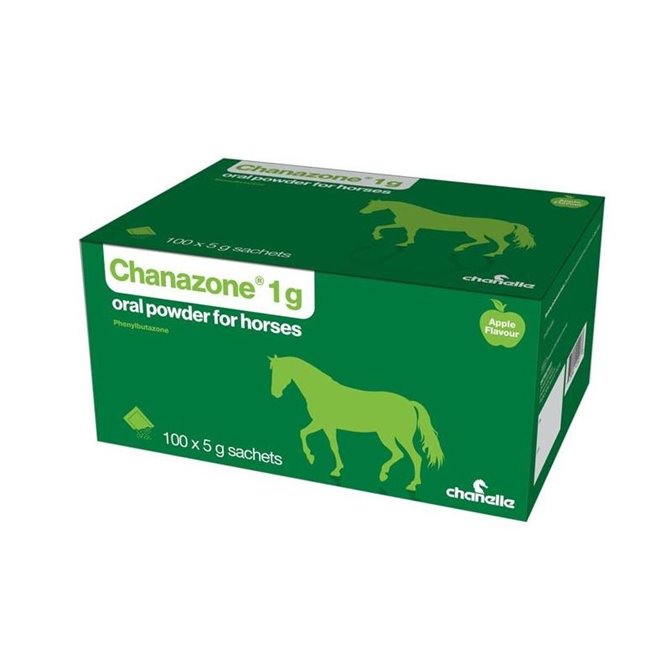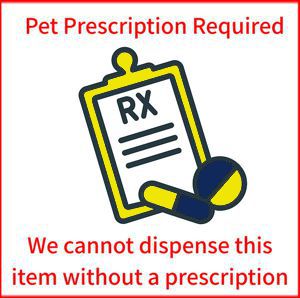
Chanazone Powder for Horses - Box of 100 Sachets
858870
Chanazone for Horses is indicated for the treatment of musculoskeletal conditions in horses where relief from pain and a reduction in the associated inflammation is required. E.g. lameness associated with osteoarthritic conditions, bursitis, laminitis and soft tissue inflammation, particularly where continued mobility is considered desirable. VETERINARY PRESCRIPTION REQUIRED
Product Features
- Pack Size: - Box of 100 x 5g Sachets
- Target Animal: - Horse (Equine)
- Related Condition: - For the treatment of musculoskeletal conditions in the horse
- Pet Prescription Required?: - Yes
- Active Ingredient: - Phenylbutazone
- Product Name: - Chanazone 1g Oral Powder for Horses
More Information
Description
Chanazone for Horses - For the treatment of musculoskeletal conditions in horses
Chanazone is a ready to use oral powder containing the indicated dose of 1g phenylbutazone per 5g. Chanazone powder can be administered neat or mixed with a suitable liquid. Chanazone has a very high oral bioavailability meaning it is detoxified and excreted very rapidly by the body. Chanazone therefore requires only very small doses to be given repeatedly. The active ingredient phenylbutazone, treating inflammation effectively at relatively low serum concentrations, is also particularly well tolerated by the horse's gastrointestinal tract; often giving relief from pain while continuing to offer the horse full mobility. The formulation in Chanazone contains myntol which acts as an additive to prevent foaming in the feed.
Because of its characteristic anti-inflammatory and analgesic properties, Chanazone is effective in relieving the pain associated with most musculoskeletal conditions encountered in the horse. This may help to reduce lameness and thereby the incidence of colic.




